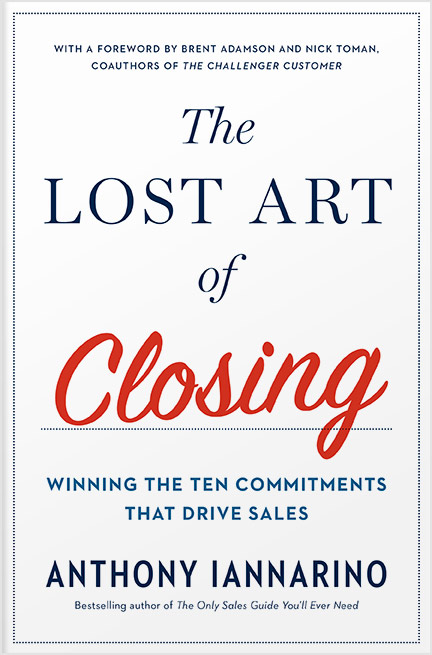The Gist:
- More and more, buyers tend to treat a B2B decision as if it were a B2C purchase.
- Information and insight have different values when making a complex decision.
- Your role in sales now requires you to convert any attempt to make the process B2C into something more appropriate for a B2B decision.
Over the last decade, B2B sales has started to adapt to the brave new world in which we find ourselves. We’ve seen significant changes in the way buyers buy, often marked by an extreme reluctance to change, even when the change is necessary. When a client engages with a salesperson it is almost always around a significant change to their business, and it’s almost certain to require the consensus of a group of stakeholders, all of whom will be affected by the decision. More deals are lost to a “no decision,” and even when you win a deal, it takes a lot longer.
One of the underlying challenges for sellers is the buyer’s tendency to treat a B2B decision as if it is a B2C (business-to-consumer) decision, even though the B2B decision is more complex and features much more negative consequences should the buyer make a poor choice. Like you, your buyers use the internet to do some initial research about the problems they are trying to solve or the new initiatives they are pursuing. In doing so, they blur the boundaries between B2B and B2C. Helping your buyers with a facilitated, needs-based buyer’s journey requires that you convert the B2C process to B2B.


Get Yourself Out of Your Way
Some research indicates that buyers don’t perceive a great deal of value from meeting with salespeople. Their general complaints center on the idea that salespeople pursue an agenda that is in conflict with their buyer’s agenda. You can blame this tendency on the legacy sales approach that starts with the assumption that your client is “dissatisfied,” and that all you need to do is understand their problem so you can propose your solution. It’s hard to argue that any buyer should spend time with a salesperson who cannot create any value for them as it pertains to the decision they are considering.
In human relationships, fast is slow and slow is fast. The second of the ten commitments in The Lost Art of Closing is The Commitment to Explore, where you give your client the space they need to have a conversation—without speeding them to the ninth commitment, the commitment to decide. You get out of your own way when you recognize that your contacts are not just trying to buy something: they are trying to make a series of decisions about their future.
No more pushy sales tactics. The Lost Art of Closing shows you how to proactively lead your customer and close your sales.
Helping your buyer make the right decision, one they can make with certainty, requires that you create value by enabling that decision. You are either facilitating that decision or you are not.


What Your Buyers Get Wrong
Imagine you don’t feel well. You open your laptop lid and find your way to a health site, the kind that allows you to type in all of your symptoms, real or imagined. Two clicks later, the site pops out a list of potential illnesses, including the rarest of rare conditions that happens to match your symptoms perfectly, something like MacGregor’s Syndrome. Well, now you know what is ailing you—better go put your affairs in order.
Information isn’t the same as knowledge. Nor is it wisdom, the combination of knowledge and experience that allows a person to make good decisions. Even though a buyer can find all kinds of information on the internet, it’s rarely the information they need to make a strategic decision, especially when the decision requires consensus and a real sense of certainty to move forward.
By overvaluing information and undervaluing the commitment to work with a partner for (hopefully) years, buyers spend too little time assessing something like “fit.” Treating a significant B2B buying decision like you’re upgrading your TV at Best Buy is a mistake. Your interaction with the salesperson (and perhaps their local Geek Squad) is limited to a single purchase, and you certainly won’t be engaging with them weekly or even daily for years of your life.


How to Change Your Buyer’s Mind
One of the best things you can do to help your client engage in the type of B2B buying process they need—the kind that helps them make a good decision for their business and generate the better results they want—is to facilitate the conversations the client needs to have with you and with their own teams. You want to help them move forward with confidence, something that is just not enabled by the legacy approaches to sales.
Perhaps the most important ways you can change your client’s mind are by helping them understand why they are experiencing the problems or challenges that have caused them to consider change, helping them understand how best to make a good decision, and deepening their understanding of the factors they must consider when choosing a partner and a solution. If you intend to win the client’s business, the only chance you have to prove you are the right partner is by demonstrating it throughout the entirety of the sales conversation.
When you don’t find a way to help your buyer engage in the conversations that are necessary to the change they need, you risk allowing them to rely on information instead of insight, not to mention the wisdom that one can only acquire through experience. No doctor worth visiting would simply agree that you have MacGregor’s Syndrome—they will instead help you figure out why you’re feeling ill and what you can do about it. So no matter how clinical and transactional your client might want to make the purchase, persuade them to engage in a process that enables a better, more informed decision about their future.
Do Good Work:
- What are the signals that suggest a prospective client is treating a B2B decision as if it were B2C?
- How do you help your client engage in the conversations necessary to the decision they are making?
- What mistakes do you see your prospective clients make because they don’t fully understand the decision they are making?








.jpg?width=768&height=994&name=salescall-planner-ebook-v3-1-cover%20(1).jpg)


